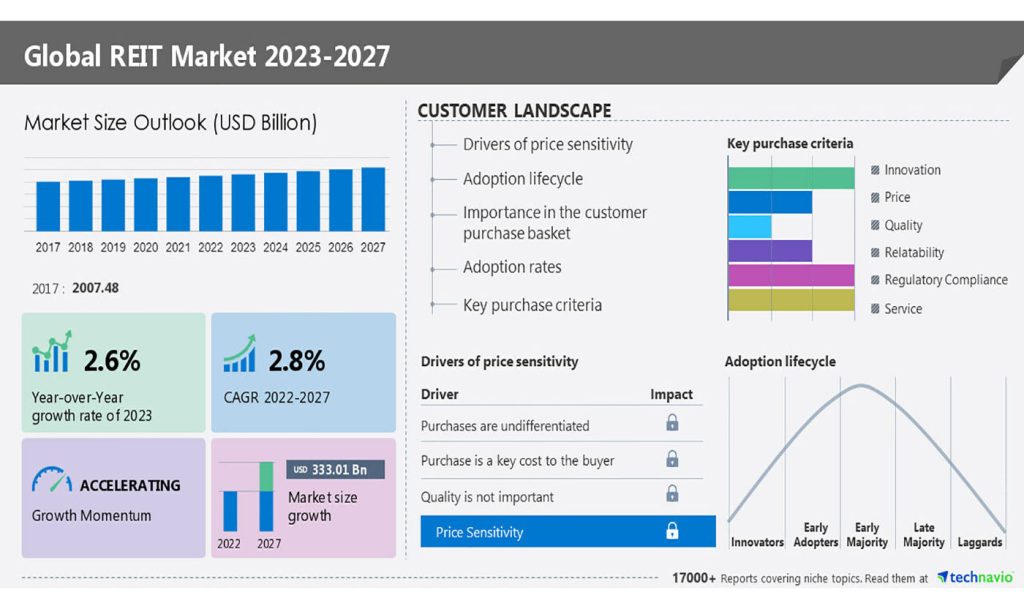Sometime in the chilly spring of 2025, I found myself repeatedly circling back to a question I hadn’t seriously asked since before the pandemic: is now the time to reenter the European REIT market?
What Prompted My Renewed Interest in European REITs?
Several things triggered my deep dive. First, real estate across much of Western Europe has started to stabilize, especially in Germany, the Netherlands, and the Nordics. The ECB’s interest rate policy, though still cautious, signaled potential rate cuts by Q4 2025 as inflation continued its downward march.
Then there were the valuation signals. Compared to US REITs, many European counterparts were trading at significant discounts to NAV (Net Asset Value). For value-oriented investors, this disparity alone is worth a closer look.
What finally tipped the scale for me was the simple reality that European REITs had become deeply unloved. And historically, when an asset class is universally out of favor—yet the fundamentals start quietly improving—that’s the perfect entry point.
The Fundamentals: Where Do European REITs Stand?
1. Office Space: The Tale of Two Markets
Let’s not sugarcoat it—commercial office REITs in Europe are still struggling, especially in cities with high exposure to remote-friendly industries. In Paris and Berlin, Class B and C office spaces are seeing elevated vacancy rates, but prime assets in business districts have begun showing signs of life. Some companies are gently shifting back to in-person operations, and rent concessions offered during the pandemic are being rolled back.
2. Residential REITs: A Case of Pent-Up Demand
Residential REITs are arguably the most compelling segment right now. Population growth from immigration, combined with ongoing housing shortages in major European metros, is creating a powerful tailwind. Vonovia SE (VNA.DE) in Germany is a stock I’ve begun tracking more closely—it cut dividends in 2023 but has announced plans to reinstate partial payouts this year. That alone signals confidence from the board.
3. Logistics and Industrial: The Pandemic’s Winners Continue
Logistics REITs remain strong. The e-commerce surge didn’t vanish after the lockdowns; instead, it reshaped expectations for shipping speed and inventory management. REITs like Tritax EuroBox and CTP NV have continued expanding their footprint, especially around intermodal transport hubs in Central Europe. Yields here are tighter, but the growth outlook is still positive.
4. Retail and Mixed-Use: Still Dicey
Retail-focused REITs are a mixed bag. While some high-end shopping districts in cities like Milan and London have recovered foot traffic, second-tier properties are still struggling. Many investors I’ve spoken to are avoiding this segment altogether—at least for now.

What the Numbers Are Telling Me
According to data from EPRA (European Public Real Estate Association), the average dividend yield for European REITs currently hovers between 4% and 6%, depending on the segment. That’s better than many US Treasuries, and with capital appreciation looking more plausible in H2 2025, the total return potential is appealing.
But the key issue is financing. Unlike US REITs, which often rely heavily on capital markets, European REITs tend to have higher leverage. With rates still high (albeit likely to fall), this could be a headwind—or an opportunity for firms with cleaner balance sheets to outperform.
Macro Themes I’m Watching Closely
1. ECB Rate Trajectory
The European Central Bank has been clear: inflation is retreating, but not gone. However, bond markets are pricing in two potential rate cuts before the end of 2025. If that happens, REITs with long-duration assets will benefit. I’m especially watching 10-year bund yields and the Euro Swap Rate as forward indicators.
2. Energy Costs and Renovation Rules
One unique challenge in Europe is the push toward green real estate. Starting in 2026, buildings in many EU countries will be required to meet stricter energy efficiency standards. For REITs with older properties, this could mean costly retrofits. For those already ahead on sustainability, it’s a competitive edge.
3. Political Stability
Between elections in the UK, ongoing protests in France, and leadership transitions in Germany, political risk is real. But markets seem more resilient than a year ago. I’ll still be factoring this in when selecting which REITs or regions to prioritize.
Platforms I Used for My Research
I relied heavily on several investment tools and websites during my deep dive:
- Seeking Alpha: I used this to read analyst opinions and compare REIT earnings across time.
- Simply Wall St: Great for quick visual summaries of REIT fundamentals and dividend history.
- EPRA: For accurate European REIT sector-wide data, yield analysis, and market updates.
- Morningstar Europe: Especially helpful for risk ratings and NAV estimates.
- Degiro and Saxo Bank: Both are good for executing trades in European-listed REITs with reasonable fees for US-based investors.
My Due Diligence Process: How I Narrowed the Field
Filtering by Geography and Regulation
One of the first decisions I made was to exclude REITs based in countries with overly complex or investor-unfriendly tax structures. France, for example, while offering some attractive REITs like Unibail-Rodamco-Westfield, has less predictable tax treatment for foreign investors. On the flip side, the Netherlands, Germany, and the Nordics offer a better balance of transparency, regulatory maturity, and liquidity.
Screening for Debt Load and Dividend History
Before adding anything to my watchlist, I used Yahoo Finance and MarketScreener to pull balance sheets, dividend history, and cash flow data.
My minimum criteria:
- Debt-to-equity below 1.2
- Dividend payout ratios below 80%
- Consistent dividend payment over the past 3+ years, with no major cuts unless justified by macro crisis
- Properties skewed toward residential or logistics
Eliminating the Walking Dead
Many REITs, particularly in the retail sector, are essentially “zombie stocks”—they still trade, but revenue growth has stalled, liabilities are increasing, and management has no clear plan forward. I ruthlessly eliminated these, even when they offered 8–9% yields. Remember: if the yield looks too good to be true, it probably is.
REITs That Made It to My Watchlist (and Why)
1. Vonovia SE (VNA.DE) – Germany
Despite its battered 2023, Vonovia is Germany’s largest residential landlord, with over 500,000 units. Their pivot toward green retrofits and potential partnership with public housing initiatives makes them a likely beneficiary of both regulatory and demographic trends. I’m especially watching their Q3 2025 guidance.
2. LEG Immobilien (LEG.DE) – Germany
Smaller than Vonovia, but more focused. Their properties are mostly in mid-sized cities—places with growing demand and lower political risk. Dividend is modest, around 4%, but the balance sheet is cleaner.
3. CTP NV (CTPNV.AS) – Netherlands
Focused on logistics parks across CEE. Very attractive growth profile, especially with Amazon and regional third-party logistics companies expanding their warehouse footprints. Yield is lower (~3.5%) but growing.
4. Tritax EuroBox (EBOX.L) – UK
This logistics REIT has pan-European exposure and one of the better-performing teams in terms of capital deployment. Strong ESG credentials too, which is more than just window dressing—ESG-compliant buildings are increasingly favored by institutional tenants.
5. Heimstaden Bostad (Unlisted) – Nordics
Although unlisted, Heimstaden’s bonds trade actively. Their real estate footprint spans Sweden, Denmark, and Germany. This is a REIT I watch via their credit profile. If they go public again—or offer a REIT ETF proxy—it’s on my radar.
Key Risks I’m Still Wrestling With
Currency Risk
This one’s easy to overlook. Many REITs report in Euros, but if I’m holding from the US, the USD/EUR exchange rate can amplify or cancel out gains. My plan is to hedge larger positions through my brokerage (IBKR allows this natively), or by offsetting with US-based assets that benefit from Euro strength.
Policy Whiplash
Germany is known for its abrupt regulatory pivots, particularly around rent controls. In 2023, Berlin’s rent freeze was ruled unconstitutional, but other cities are exploring similar measures. I factor this in when estimating rental growth and prefer REITs with exposure to multiple jurisdictions.
Refinancing Costs
The real killer for REITs in a high-rate world is refinancing maturing debt. I closely study each REIT’s bond maturity ladder, available via their investor relations reports. If too much debt is coming due in the next 12–18 months, I tread carefully.
Tools That Helped Me Dig Deeper
I’d be remiss not to mention a few research tools that made this process easier and more insightful:
- TIKR Terminal: Ideal for pulling historical metrics, revenue segments, and comps.
- Interactive Brokers (IBKR): I use IBKR for executing non-US trades, tracking FX exposure, and accessing international analyst reports.
- [Xetra and Euronext Portals]: Direct from the exchanges where these REITs trade. Good for cross-checking volume and price action.
- Investing.com: I especially use it to set alerts for macro events—like ECB rate decisions or bond auction results—that could affect REIT sentiment.
- Wallmine Europe: For simplified financial breakdowns and visual dashboards.
My Tentative Allocation Strategy
While I haven’t pulled the trigger on all of them, here’s how I’m thinking of allocating capital if the positive signals hold:
- 40% to residential REITs (mainly Germany and Netherlands)
- 30% to logistics REITs (pan-European, skewing toward Central Europe)
- 20% to diversified REITs with exposure to office + residential
- 10% reserved for opportunistic trades based on earnings surprises or regulatory updates
I plan to enter gradually over 6 months, using cost averaging. This isn’t a “bet the farm” scenario—European REITs still face headwinds—but it’s a calculated reopening of exposure to a sector that may just be turning the corner.
Talking to Other Investors: What the Sentiment Looks Like
One of the best ways to test your assumptions is to talk to people who completely disagree with you.
I spent time on platforms like Seeking Alpha, Reddit’s r/EuropeanRealEstate, and private Slack groups from investment newsletters I subscribe to. The sentiment? Mixed, but slightly turning.
Some older investors have sworn off European REITs altogether, scarred by poor returns and negative interest rate policies of the 2010s. Others are cautiously optimistic, pointing out that the worst of inflation may be behind us, and that physical real estate has lagged badly compared to tech—perhaps too badly.
I was especially convinced by a fund manager I spoke with during a virtual event hosted by Morningstar Europe. His argument: “People forget REITs aren’t just about property—they’re about capital efficiency. European REITs had to learn discipline the hard way during COVID. Now, with repricing and lower valuations, they may be some of the few areas in Europe where you still get genuine value.”
That clicked with me.
The Psychological Battle: Speculation vs Patience
Like any contrarian play, getting into European REITs today feels uncomfortable. You’re not riding a wave—you’re paddling out alone, hoping for the wave to arrive.
I found myself checking prices daily, second-guessing myself whenever I saw red. But the truth is, good REIT investing has always required patience. Dividends compound. Tenants renew. Properties appreciate slowly. This isn’t crypto. It’s not supposed to move fast.
That’s also why I’ve stopped chasing speculative REITs in distressed office or hotel sectors. If I need excitement, I have a separate portfolio for that. My European REIT plays are for stability, cash flow, and long-term appreciation.
What I’m Watching Now
As I finalize my entry points, I’m closely watching:
- ECB Policy Guidance: A rate cut in Q3 2025 could be the final catalyst to drive real interest back into REITs.
- Bond Spreads: Narrowing spreads between REIT bonds and government bonds signal growing confidence.
- Rental Yield Trends: Some submarkets in Spain and Eastern Europe are seeing rental growth that outpaces inflation.
- Green Retrofits and ESG Mandates: Tenants are increasingly choosing sustainable buildings, and REITs that invest in upgrades are capturing premium rents.
A Word on Taxes and Withholding
A hidden trap many U.S. or non-EU investors fall into: withholding taxes.
Each European country has its own treaty rules. Germany withholds ~26%, the Netherlands ~15%, and Sweden around 30%, unless you reclaim it. You can partially recover this via Form 1116 (if you’re a U.S. taxpayer), but it adds complexity. That’s why I use brokers like IBKR, which automatically claim the lower treaty rate for me.
Some REITs also pay dividends as “return of capital,” which may affect your cost basis and not be taxed immediately. But always confirm with a tax advisor—especially for international holdings.

Final Reflections: Am I Buying?
Yes—but slowly.
I’ve initiated small positions in Vonovia and CTP NV, and I’m setting buy orders for LEG Immobilien and Tritax EuroBox on dips. These are what I call “probationary holdings”—I scale in only if the thesis continues to play out.
There’s no urgency. Unlike AI stocks or crypto tokens, the REIT market gives you time to build a position thoughtfully. And frankly, that’s what I like about it.
If you’re considering following the same path, here’s my best advice: don’t just buy the headline yield. Study the debt, listen to the earnings calls, and understand what tenants these REITs depend on. Property is local, even if your broker isn’t.
And most importantly: know your goal. If you’re looking for 10x in a year, REITs aren’t it. But if you want stable, growing income and the potential for capital gains as Europe slowly finds its footing—this might be the window we’ve been waiting for.
Recommended Sites for Research and Investing in REITs
Here are some of the most reliable platforms I used during my research:
- JustETF – for finding REIT-focused ETFs across European markets.
- TIKR Terminal – deep financial data, ideal for analyzing cash flows and REIT metrics.
- MarketScreener – simplified valuation dashboards.
- Investing.com – alerts and macro calendars.
- Morningstar Europe – analyst ratings, especially useful for REIT ETFs.
- Interactive Brokers – best-in-class access to European stock exchanges.
If you’re in the U.S. and want more localized info about European market access, Fidelity International and Charles Schwab Global Investing also offer decent access and educational tools.
Thanks for reading—and as always, invest with conviction, but verify everything twice.



